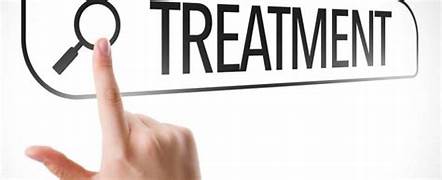Rehab Options for Every Stage: From Detox to Long-Term Recovery
 Recovering from addiction is a journey that requires different levels of care, depending on the stage of recovery an individual is in. The rehabilitation process is not a one-size-fits-all approach, as different people require different types of support. From detoxification to long-term recovery, here are the key rehab options available at every stage of addiction treatment.
Recovering from addiction is a journey that requires different levels of care, depending on the stage of recovery an individual is in. The rehabilitation process is not a one-size-fits-all approach, as different people require different types of support. From detoxification to long-term recovery, here are the key rehab options available at every stage of addiction treatment.
1. Detoxification (Detox)
Detox is the first and most critical step for individuals struggling with substance dependence. The goal of detox is to safely remove harmful substances from the body while managing withdrawal symptoms. Medical detox is recommended for those with severe addiction, particularly to substances like opioids, alcohol, or benzodiazepines. In a supervised medical setting, healthcare professionals provide medications and monitoring to ensure a safe and comfortable detox process. For milder cases, outpatient detox programs are available, allowing individuals to receive treatment while still maintaining some daily responsibilities.
2. Inpatient Rehabilitation
After detox, many individuals transition into an inpatient rehabilitation program. Inpatient rehab provides 24/7 care in a structured environment, ensuring individuals receive medical and psychological support. These programs typically last between 28 and 90 days, depending on the severity of the addiction. Inpatient rehab includes therapy, group counseling, and holistic treatments like meditation and fitness programs. This level of care is ideal for individuals who need intensive support and a controlled environment to prevent relapse.
3. Partial Hospitalization Programs (PHPs)
PHPs serve as a middle ground between inpatient and outpatient care. Patients attend structured therapy sessions during the day while returning home in the evenings. PHPs provide medical supervision, counseling, and skill-building workshops, making them a good option for individuals who have completed inpatient rehab but still require a high level of support. These programs typically last several weeks to a few months, depending on the individual’s progress.
4. Intensive Outpatient Programs (IOPs)
IOPs allow individuals to continue their recovery while balancing work, school, or family responsibilities. These programs involve several hours of therapy and counseling per week but do not require full-time residential care. IOPs focus on relapse prevention, coping skills, and integrating individuals back into their daily lives while maintaining sobriety. This stage is ideal for those transitioning from PHPs or inpatient treatment and still needing structured support.
5. Outpatient Programs
Outpatient rehab is the least restrictive level of formal addiction treatment. These programs involve weekly therapy sessions and group support but allow individuals to live at home and continue with their normal routines. Outpatient rehab is best suited for those with mild substance use disorders or individuals who have successfully completed higher levels of care and are looking for ongoing support.
6. Long-Term Recovery and Aftercare
Recovery does not end with formal rehab; ongoing aftercare is essential to maintaining sobriety. Support groups such as Alcoholics Anonymous (AA) or Narcotics Anonymous (NA), sober living homes, and continued therapy help individuals stay on track. Many rehab centers offer alumni programs to provide lifelong support and community engagement. Long-term recovery requires ongoing commitment, lifestyle changes, and strong social support networks.
Conclusion
Rehabilitation is a multi-stage process, with each level of care designed to support individuals at different points in their recovery journey. From medical detox to outpatient support and aftercare, there are treatment options for every stage of recovery. The key to successful rehabilitation is choosing the right program that matches an individual’s needs, ensuring a strong foundation for long-term sobriety.
